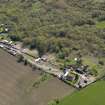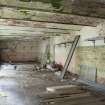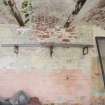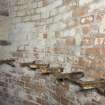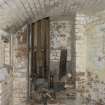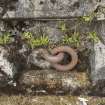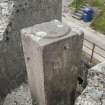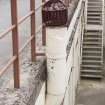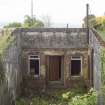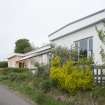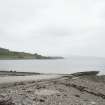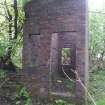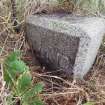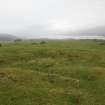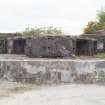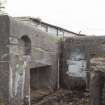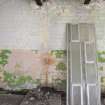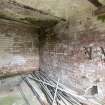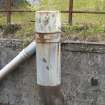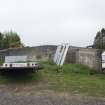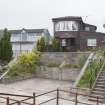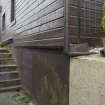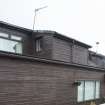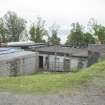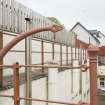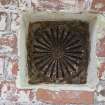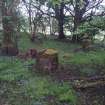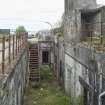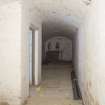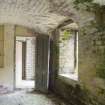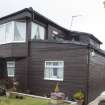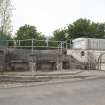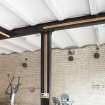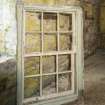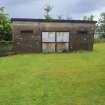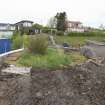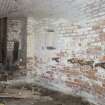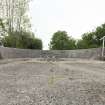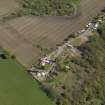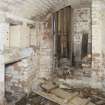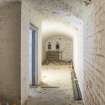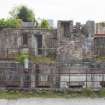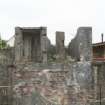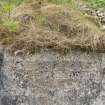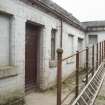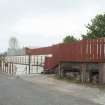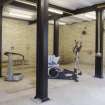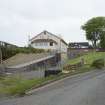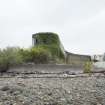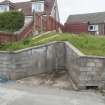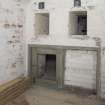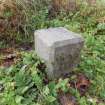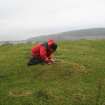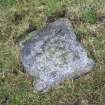Pricing Change
New pricing for orders of material from this site will come into place shortly. Charges for supply of digital images, digitisation on demand, prints and licensing will be altered.
Clyde Defences, Portkil Battery
Coastal Battery (20th Century), Coastal Battery (First World War)
Site Name Clyde Defences, Portkil Battery
Classification Coastal Battery (20th Century), Coastal Battery (First World War)
Alternative Name(s) Fort Road
Canmore ID 119886
Site Number NS28SE 39
NGR NS 25068 80469
NGR Description From NS 24880 80553 to NS 25344 80307
Datum OSGB36 - NGR
Permalink http://canmore.org.uk/site/119886
First 100 images shown. See the Collections panel (below) for a link to all digital images.
- Council Argyll And Bute
- Parish Rosneath
- Former Region Strathclyde
- Former District Dumbarton
- Former County Dunbartonshire
This coast artillery battery, situated north of Portkil Point and east of Kilcreggan, was one of five used during the First World War to defend the important port and ship-building centre on the Clyde. This was a powerful battery of two 6-inch naval guns (NS28SE 39.01), capable of tackling a large enemy warship coming up the river, and two 4.7-inch Quick Fire guns (NS28SE 39.02) (intended to tackle faster, smaller vesssels). This battery was paired with another, at Fort Matilda, on the south side of the estuary (NS27NE 96). The estuary is about 2.2km wide here, but the larger guns had a range of almost 11km, firing an armour-piercing shell weighing 45kg.
The battery was built between November 1900 and 31 March 1904, by Aikenhead Builders, Greenock. The estimated cost of the battery was £21,856 and there is a note on a February 1908 War Department record drawing of what was built, that no final price could be stated because, at the time the drawing was done, there was a dispute with the contractor. The price for a smaller and less complex battery further down the river, by the same contractor, was £16,000 - around £1M today.
The battery originally comprised the pair of 4.7-inch emplacements at the east end, and the pair of 6-inch emplacements about 180m away to the west. At a point mid-way between them were a cookhouse, toilets and a store (NS28SE 39.08). In both pairs of emplacements the gun pits lay above a magazine building, deeply buried in the ground on the side exposed to an enemy.
Towards the end of 1908 plans were in hand to build a new combined battery control post and Electric Light Director control post, just above and behind the 6-inch guns (NS28SE 39.03). This two-storey building was deeply buried on the side exposed to the enemy, with only its observation windows exposed above ground. Further buildings, offices for the Royal Artillery staff and the resident Royal Engineers, stores and quarters for a caretaker, were all being designed at the same time. A later map shows that battery control/ELD post and the offices etc had been built before 1915, a fire control post to the E and slightly behind the BC/DEL post, of which drawings dated 1913 exist, was built.
Two Defence Electic Lights - powerful searchlights to illuminate targets at night - were placed closer to the shore than the guns (NS28SE 39.05).
Record maps drawn in 1916 show that a large accommodation camp (NS28SE 39.07), comprising 10 large barrack huts and accompanying stores, cookhouse etc had been built to the east of the battery, protected by the lie of the land from enemy fire.
Maps drawn in 1916 also show the strong defences of the battery itself, to protect it from an enemy attack by land. Defensive trenches were dug on the tip of Portkil Point and the whole landward side of the battery was surrounded by a barbed wire entanglement and six of what were called ‘blockhouses’ (structures that would later be called pillboxes). An outer line of defences was constructed between 700m and 1.6km from the battery, comprising five ‘positions’, each of which had one, three, or most commonly two, blockhouses, and trenches: there were 12 pillboxes in total in the outer defensive line. Other shelters, latrines and officers’ huts were built around. The HQ of the defensive troops was at Portkil farm. At least one of the pillboxes survives (NS28SE 39.06).
The 6-inch guns were removed in 1916 and installed further down the river at the Cloch Point battery (NS27NW 21). The two 4.7-inch guns were removed in 1928. The battery was not re-commissioned in the Second World War but the area was used as a naval base.
The area of the battery is now used for housing but many elements of the battery survive and some buildings have been restored, for example as holiday accommodation. Lengths of the original fence survive beside Fort Road,
Information from HS/RCAHMS World War One Audit Project (GJB) 5 July 2013.
NS28SE 39.00 From 24880 80553 to 25344 80307
NS28SE 39.01 NS 24907 80535 Gun Emplacements
NS28SE 39.02 NS 25068 80469 Gun Emplacements
NS28SE 39.03 NS 24893 80560 Observation Posts
NS28SE 39.04 NS 25191 80216 Pillbox
NS28SE 39.05 NS 25284 80241 and NS 25257 80227 Searchlight Battery
NS28SE 39.06 NS 25336 80318 Pillbox
NS28SE 39.07 NS 25283 80411 Military Camp
NS28SE 39.08 NS 24985 80503 Buildings
NS28SE 39.09 NS 25203 80366 Engine House
NS28SE 39.10 NS 25190 80380 Building
NS28SE 39.11 NS 23259 80357 Building: House
NS28SE 39.12 NS 25303 80331 Store; House
NS28SE 39.13 NS 25051 80490 Building:house
NS28SE 39.14 NS 24918 80422 Rifle Range
For outlying Portkil Battery defences see
NS28SE 39.15 Centred NS 23678 81510 Pillboxes; Building
NS28SE 39.16 Centred NS 24950 81390 Pillboxes; Trenches; Trench
NS28SE 39.17 Centred NS 25677 81140 Pillboxes; Trenches; Building
NS28SW 30 NS 2439 8134 Enclosure: pillboxes; Trenches; shieling-hut
NS28SW 5 NS 235 812 Earthwork; Pillboxes; Trenches
For other the other part of Portkil Battery, WW I gun emplacements and magazine see also NS28SW 26
This World War I coastal battery is situated to the N of Porkil Point and E of Kilcreggan. Two 6-inch and two 4.7-inch concrete gun emplacements, the Battery observation post (BOP), engine room, magazines, several other buildings with the searchlight platforms on the shore, are still extant.
The two World War I 6-inch MkVII/II guns (numbered 2406 and 2384) were installed during 1904 and removed in October 1916 then taken to the Cloch Point Battery (NS27NW 21). The two 4.7-inch QF (quick firing) VB/V also installed during 1904 were removed in 1928.
J Guy 2001; NMRS MS 810/11, Part 2, 106-7; Vol.2 (appendix), 10-11
The two 4.7-inch gun emplacements, accommodation camp, searchlight platforms and other buildings are visible on postwar vertical air photographs (CPE/Scot/ 350, 5210-5211, flown 17 April 1948). It is not known whether the battery was utilised during WW II.
Information from RCAHMS (DE), March 2003
Project (March 2013 - September 2013)
A project to characterise the quantity and quality of the Scottish resource of known surviving remains of the First World War. Carried out in partnership between Historic Scotland and RCAHMS.










































































































